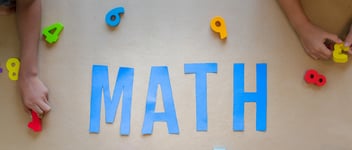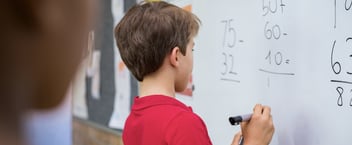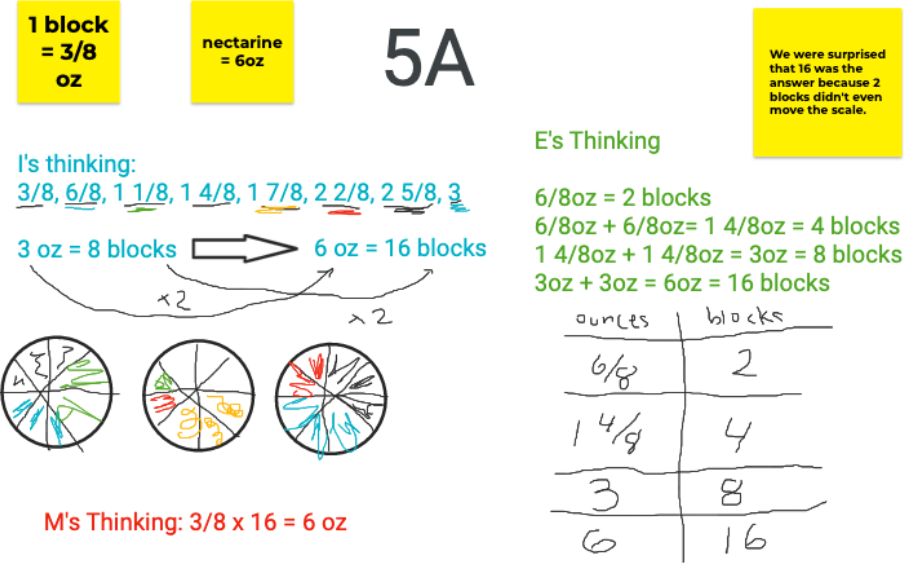
Jamboard Routine for 3 Act Math Tasks
After April vacation, I polled my fifth and sixth grade math lab groups to see how they wanted to close out the year together. I told them that in our last intervention cycle of the year we had two options.
I could design team problem-solving tasks for us to take on each week as a group (there are 4-5 students per group) OR
I could design math menus for us to take on each week with individual and group choices in different problem-solving tasks.
I explained to my students that in either option each one of them will still be held accountable for growing their understanding and problem solving skills. In a team problem solving task, we talked about the fact that some students will gain understanding first. Those students will have to put in the work to find different ways to explain and show their thinking until all teammates understand and agree. We also discussed how some students will get stuck along the way and will have to put in the work of perseverance in order to not give up. In the menu setting, I explained that each student will set a goal for themselves and design their work from their menu options to help them achieve their goal.
Unanimously every group decided that they wanted more team problem-solving tasks. I designed the following Jamboard routine using 3 Act Task resources and thinking about our ALN Problem Introduction Protocol. It takes us about two to three 45 minute classes to complete the entire Jamboard, I build a new Jamboard for each new 3 Act Math Task that we take on which creates a record of the work, strategies, and “lightbulb moments” that we’ve had collectively in our problem solving together.
Act 1 Routine:
I share the title and author of the three act task before we watch Act 1 together. Students are asked to share with their team what they noticed and wondered about in the video. I record these observations and questions on the Jamboard. Each group gets their own post-it color on the Jamboard.

After our notice and wonder discussion, I challenge the students to guess what big question we will be answering in this problem. Once they figure out the big question, I ask them to tell me what information they would need from Act 2 in order to be about to solve the problem. Finally, we try to frame our estimates with a discussion about what would be too low and too high of an estimate.

In this particular problem called “The Nectarine”, all the groups agreed that the single digits would be too low an estimate for this problem. However we had several minutes of discussion and a lot of disagreeing on what would be a reasonable too high number.
After this discussion students are then asked to commit to an estimate on the next slide. As students think about their estimate, I ask each group what label we will use with the answer (i.e. what is the answer about). For this problem, I uploaded an image of a cube onto the slide once a student replied, “The answer will be about the number of cubes that equals a nectarine.” The image of the cube on the slide helps remind students that the numbers in their estimates are actually referring to a quantity of cubes.

Act 2 Routine:
After all the estimates are recorded and organized, I allow the students to work in their groups to use the information provided in Act 2 to answer the big question. Before I release the teams of students to their work, we brainstorm strategies that may be useful when trying to answer the big question.

After students have some partner work time, we have a group discussion and share strategies, aha moments, and stuck points. The group and I record their thinking on their group’s Jamboard page. The students know that all the other groups will be asked to interpret their thinking by looking at the work on their slide. This motivates students to really show their work and thinking.
Here is their work on the 3 Act Math Task created by Graham Fletcher called “The Nectarine”.
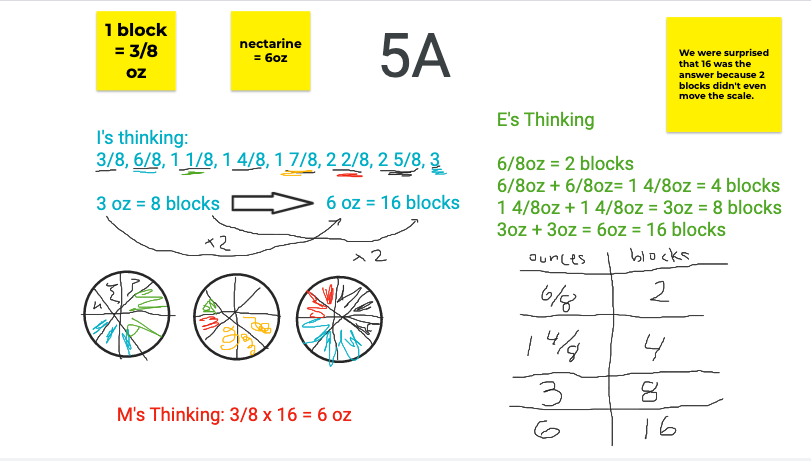
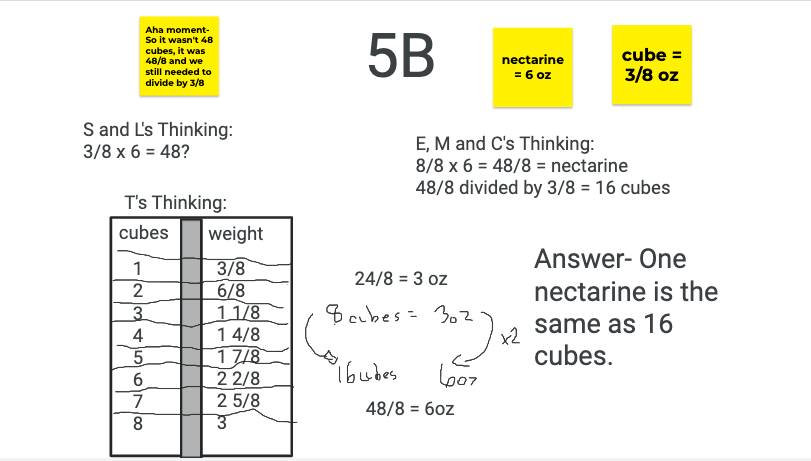


Act 3 Routine:
Once all student groups are done creating their Jamboard slide, we begin Act 3. First each group is asked to summarize the work and thinking on their own slide. This is another opportunity to hold all students accountable to understanding the work and thinking that went into solving this task. I often ask the students who seemed to have contributed the least to the team’s solution to explain their team’s thinking. Next, I have each group check out the other slides in the Jamboard. Students must interpret the work and tell me in their own words what the other teams were thinking based on their Jamboard slide. Throughout this discussion, we are making connections to the strategies and thinking of the different groups. Finally, we watch the Act 3 video to see how accurate our solutions were.
Closure:
I wrap-up the problem with each group by having two closing conversations. First I return to the estimates page in the Jamboard and we talk about how their solution compared to what we were thinking at the beginning of the problem. In examining how our thinking changed as we worked, I am trying to devalue the mindset that problem-solving is about figuring out solutions quickly. I want students to be comfortable with the feeling of discomfort when they first dive into problem-solving.
Second, I show them my favorite “aha” or lightbulb moments from my observations of the groups while they were working. This is similar to another popular instructional routine called “My Favorite No.” I choose a stuck moment or two that I observed in the problem-solving process and create a slide to spark a discussion. We discuss the lessons these lightbulb moments teach us about how to be strong problem solvers.


Erin Oliver
K-6 Math Specialist, Grand Isle School
ALN Math Facilitator



